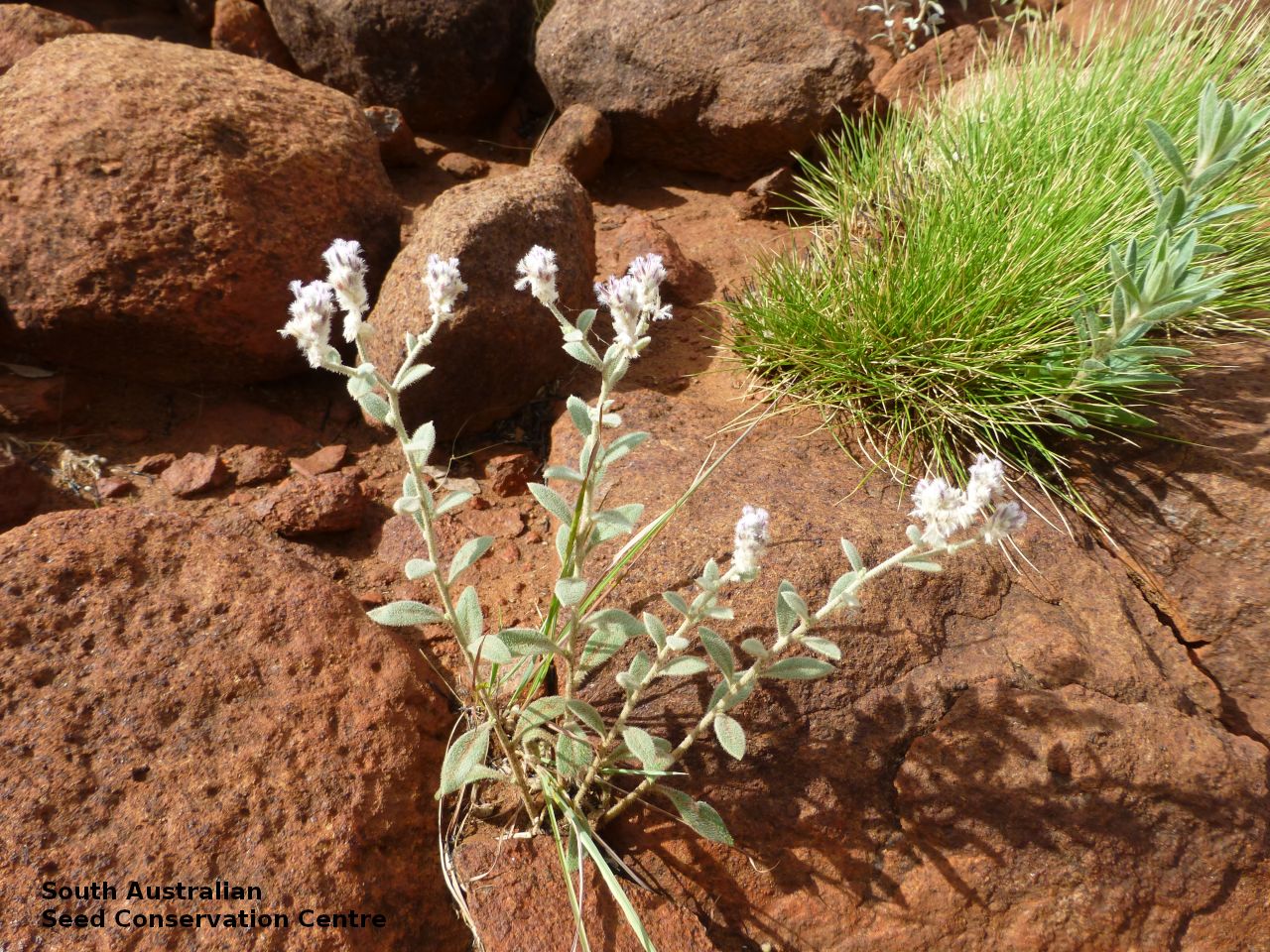
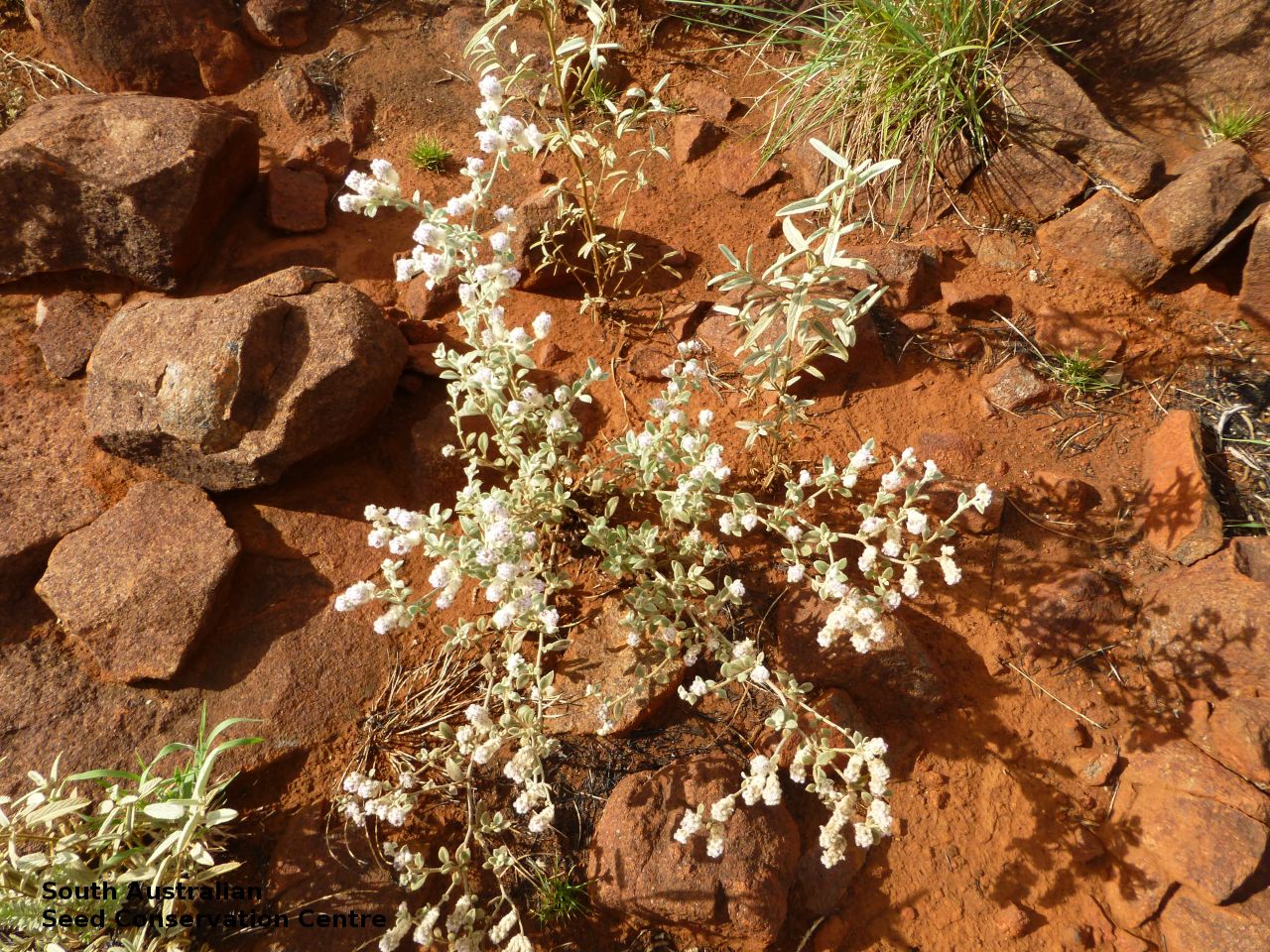
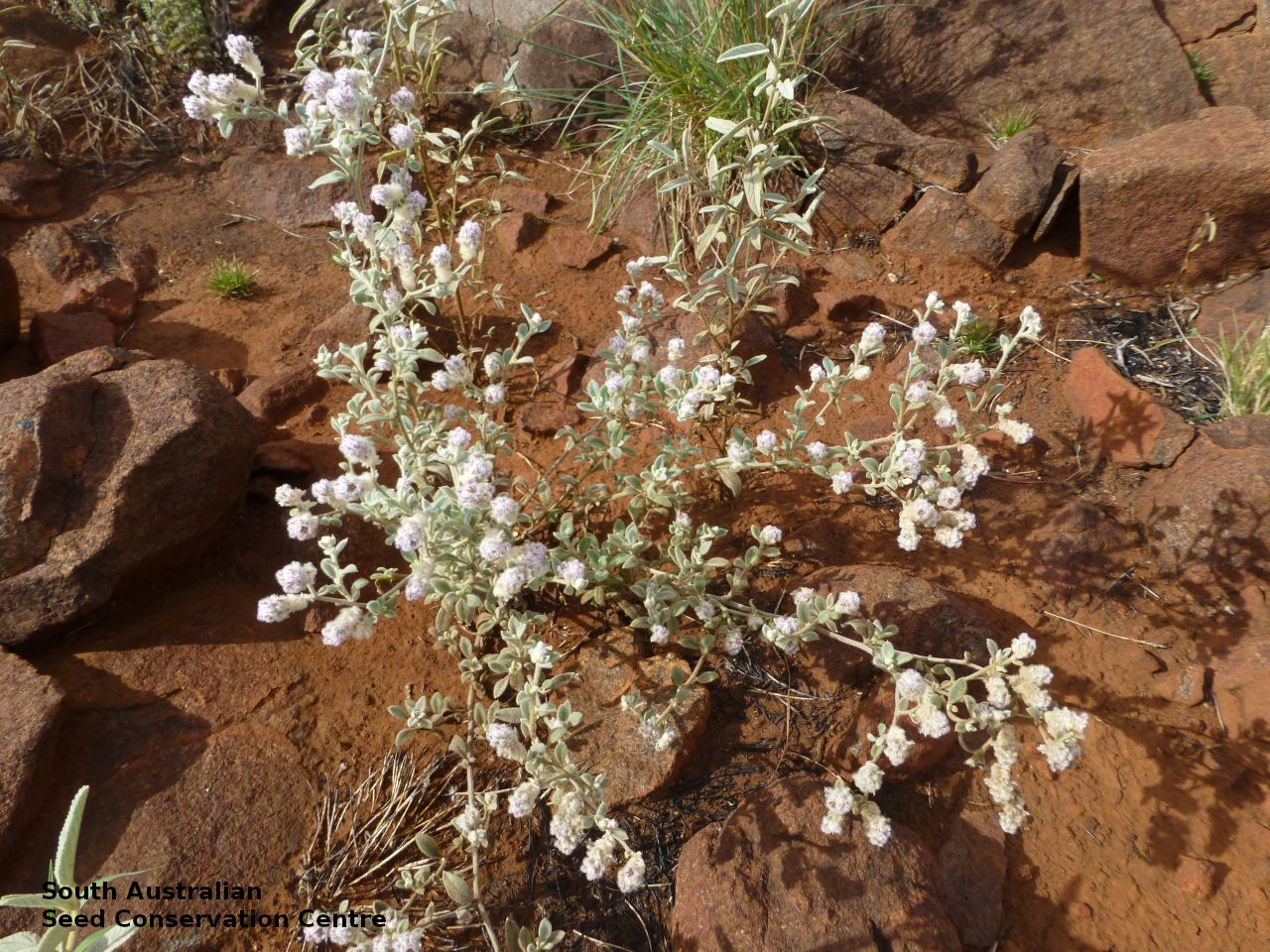
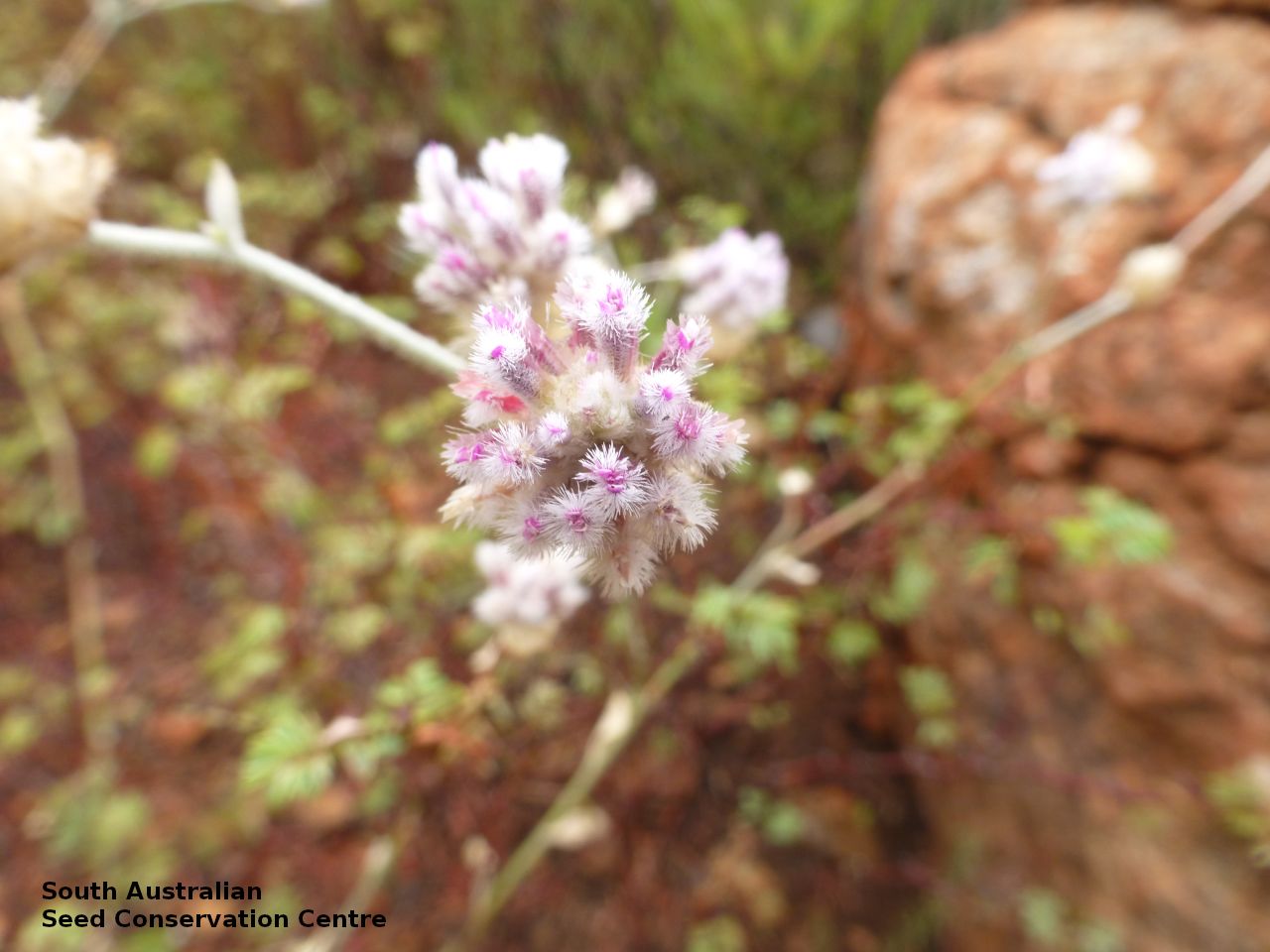
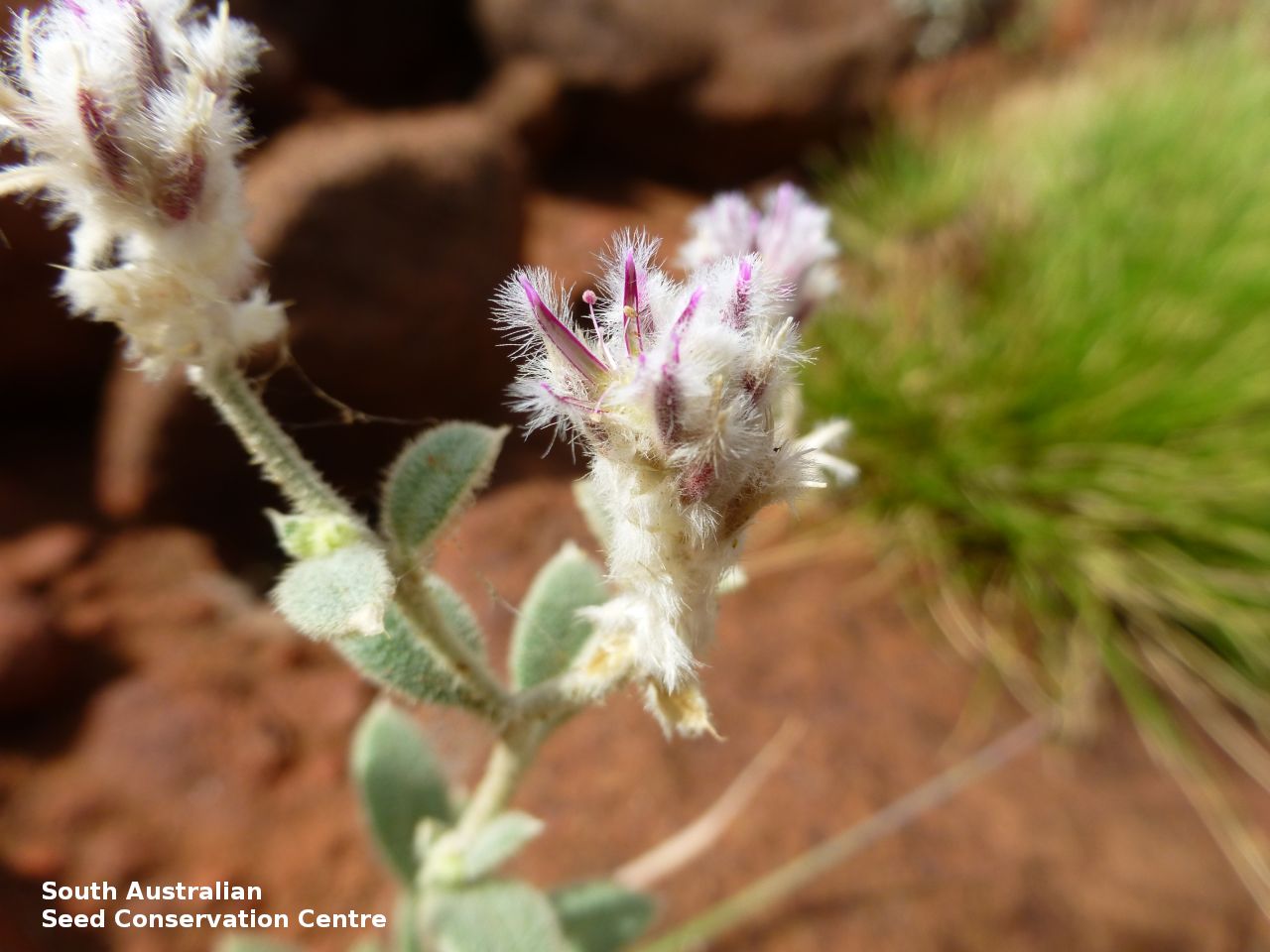
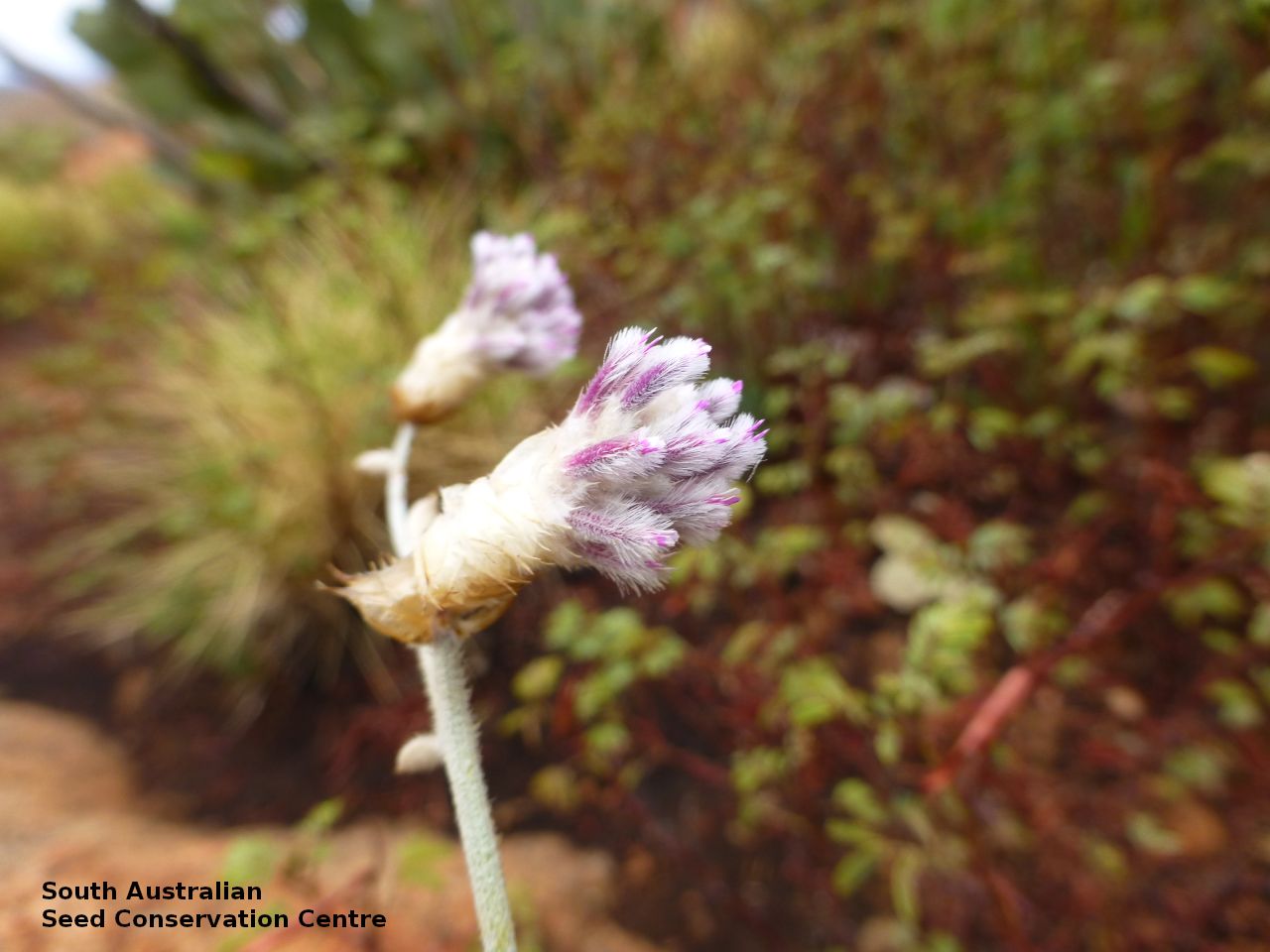
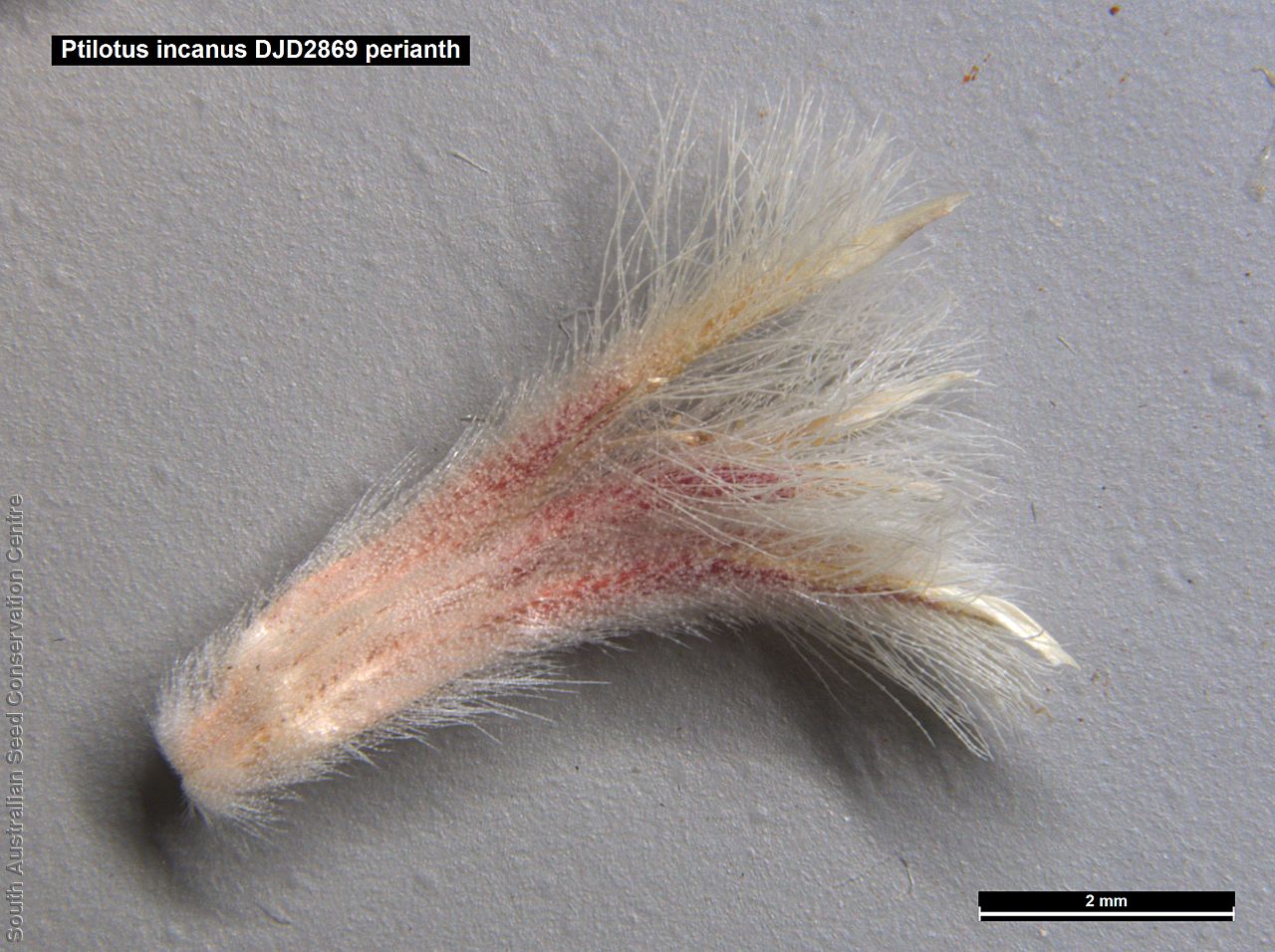
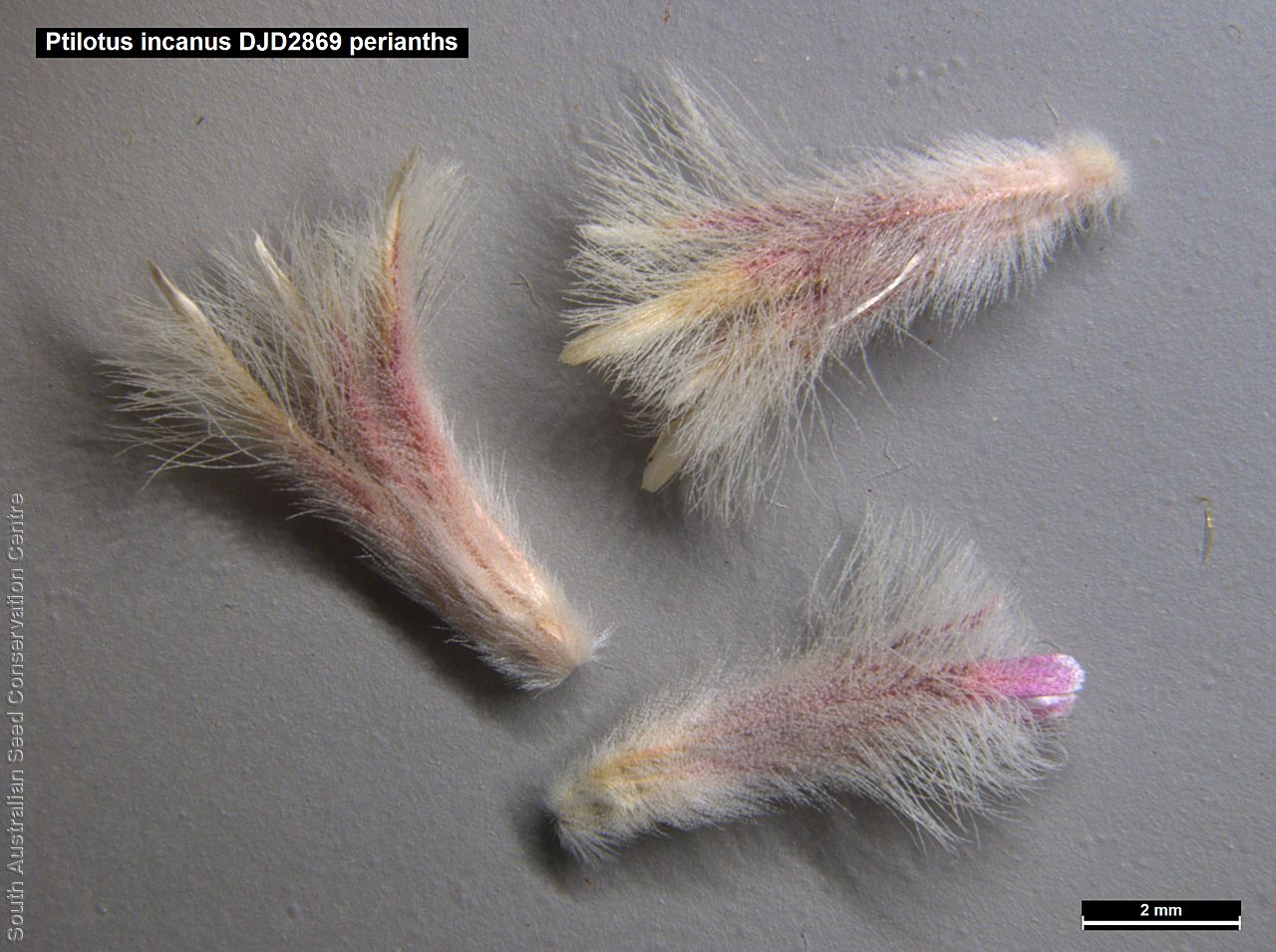
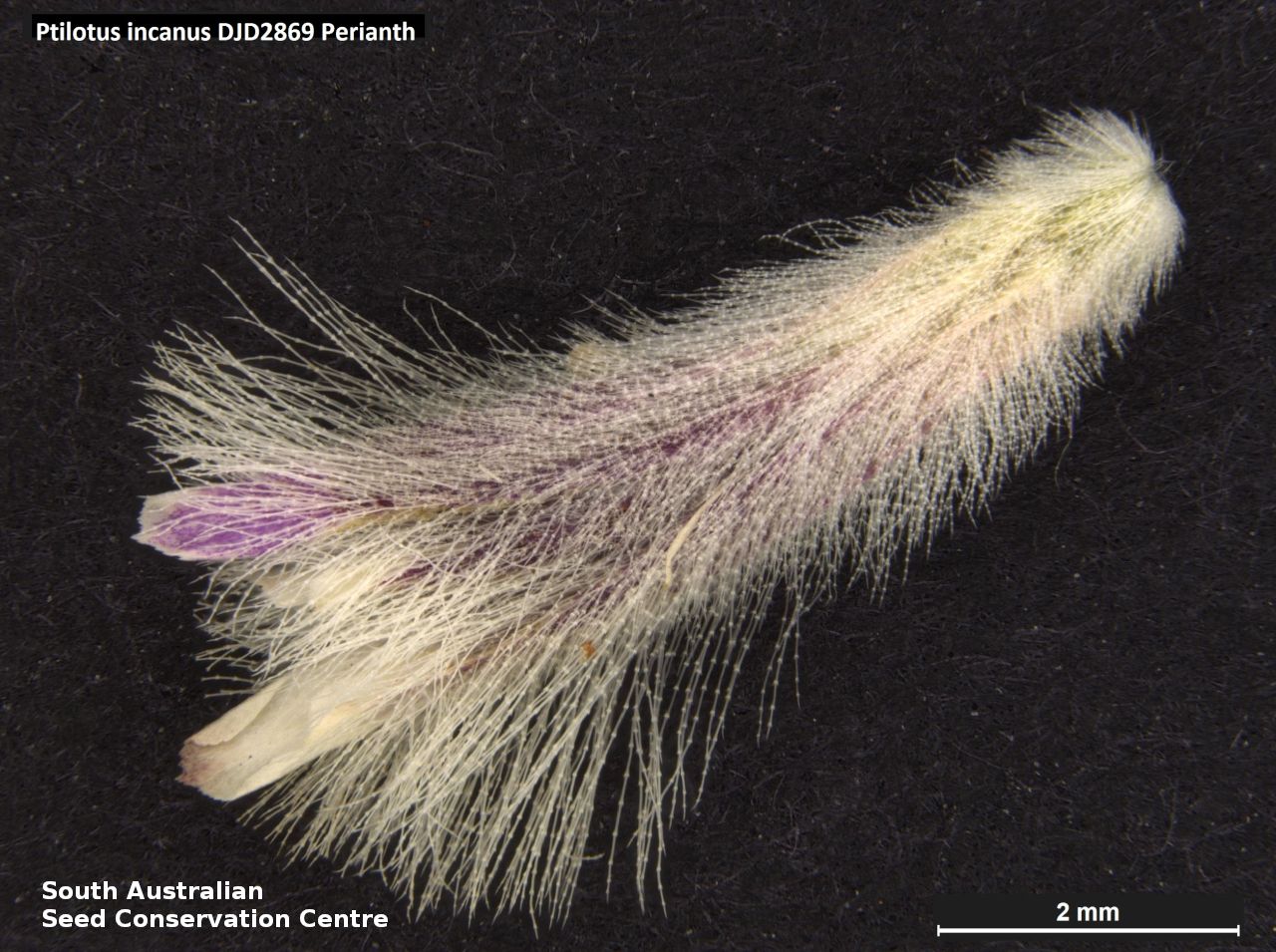
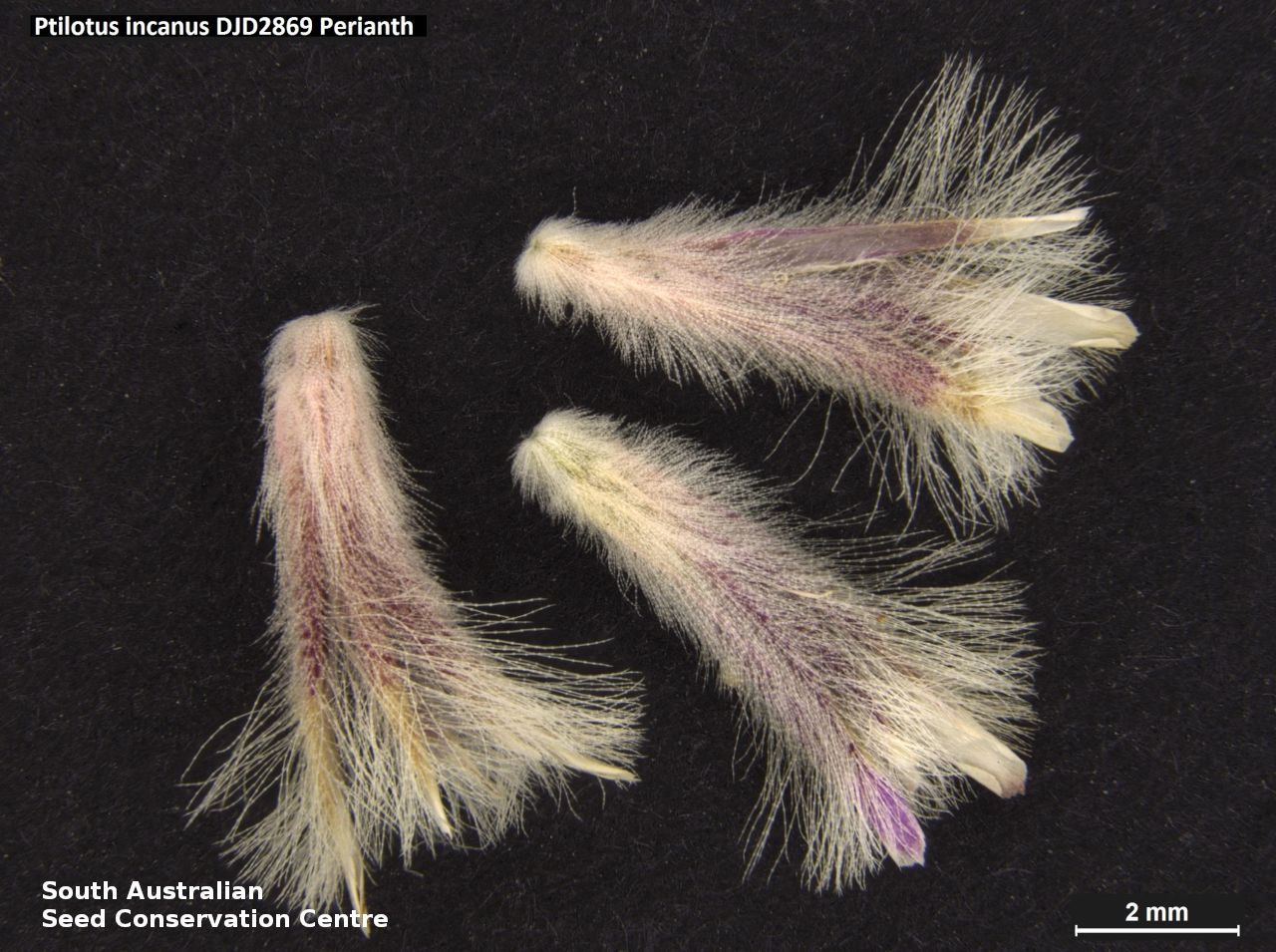

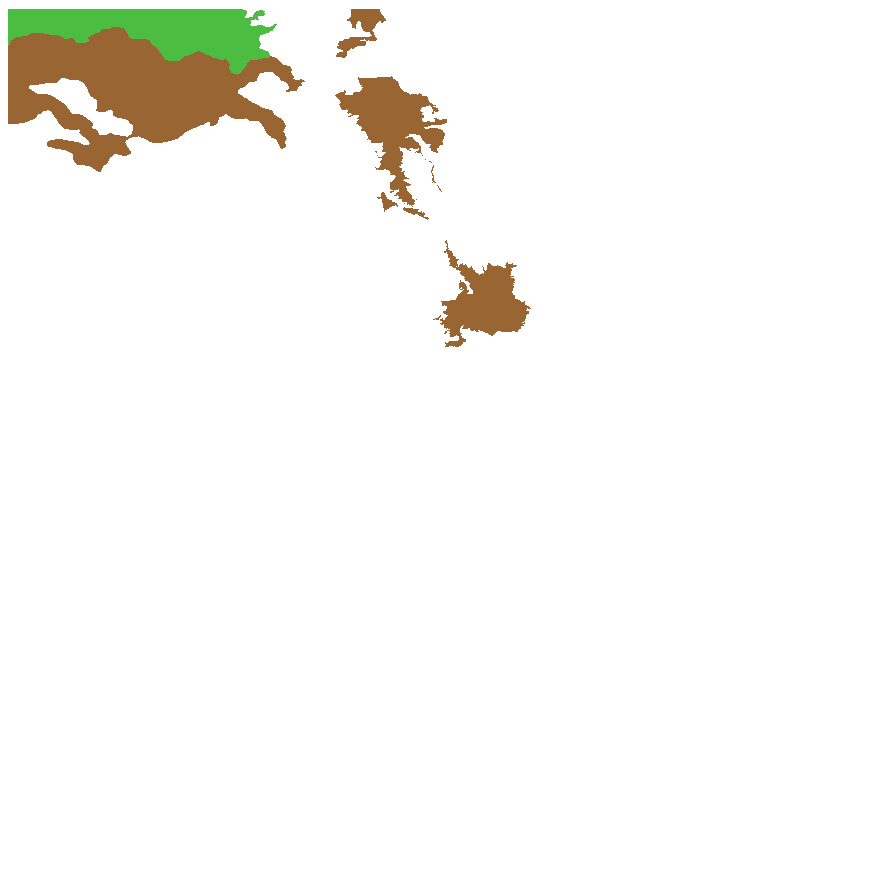
Botanical art
Prior names
Ptilotus incanus var. incanus
Ptilotus obovatus var. griseus
Ptilotus incanus var. parviflorus
Ptilotus helmsii, nom.inval., pro syn.
Trichinium incanum var. parviflorum
Trichinium incanum
Trichinium gnaphalodes
Common names
Grey Fox-tail
Etymology
Ptilotus from the Greek 'ptilotos' meaning feathered or winged; referring to the hairy flowers. Incanus from Latin meaning grayish-white; referring to its appearance.
Distribution and status
Found in the north-western part of South Australia, growing on rocky hills with eucalypts or acacia and Triodia. Also found in Western Australia, Northern Territory and Queensland. Native. Uncommon in South Australia. Rare in Queensland. Common in Western Australia and Northern Territory.
Herbarium region: North Western
AVH map: SA distribution map (external link)
Plant description
Shrubs with ascending to erect stems covered in dense hairs. Leaves lanceolate-ovate on short-petiolate. Flower-spikes small terminal cluster with hairy white flowers tinged with pink. Flowering between April and December. Fruits are whitish globular head containing numerous long papery and hairy fruits, each containing one seed. Seed embryo type is peripheral.
Seed collection and propagation
Collect seeds between September and January. Be very careful when collecting this species as the fruits contain fine hairs that may cause an allergic reaction for some people. Collect the fruit heads when dried to a pale straw colour. Each fruit should come off the head easily when fingers are rubbed up the stem. Collect more fruits than required as not all fruits will have a viable seed. Be very careful when cleaning this species as the fruits contain fine hairs that may cause an allergic reaction for some people. To clean, rub the fruit heads gently to dislodge the seed at the base of each fruit. Use a sieve to separate the unwanted material. Store the seeds with a desiccant such as dried silica beads or dry rice, in an air tight container in a cool and dry place. Seed viability is usually high but seed availability tend to be low. Seeds are non-dormant, viable seed should germinate readily.